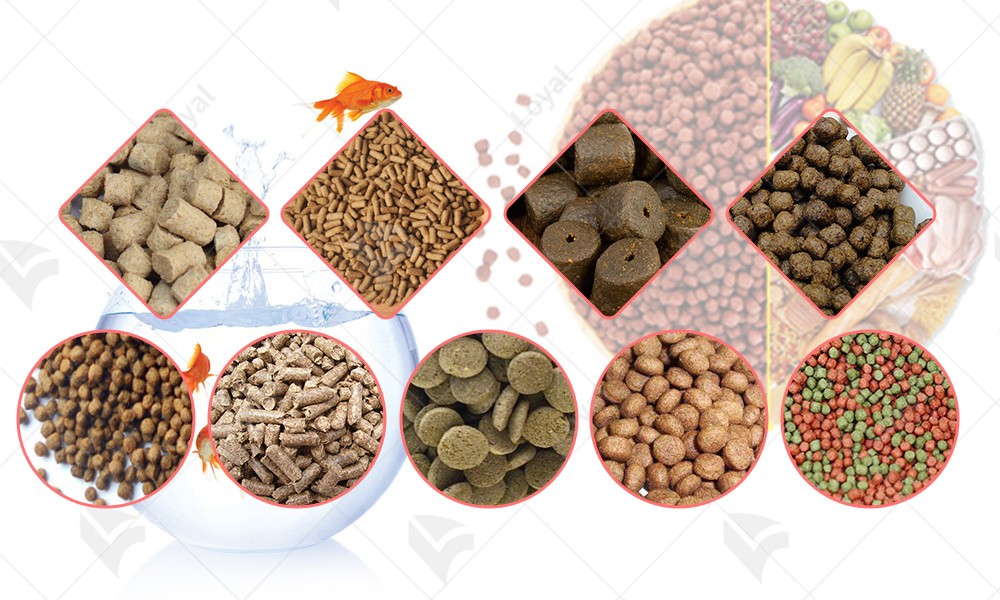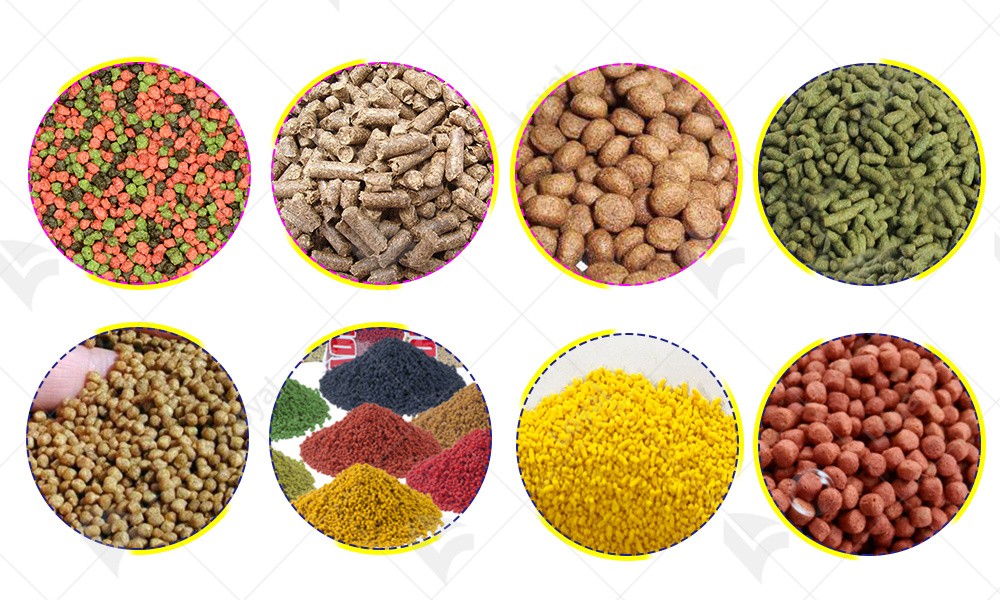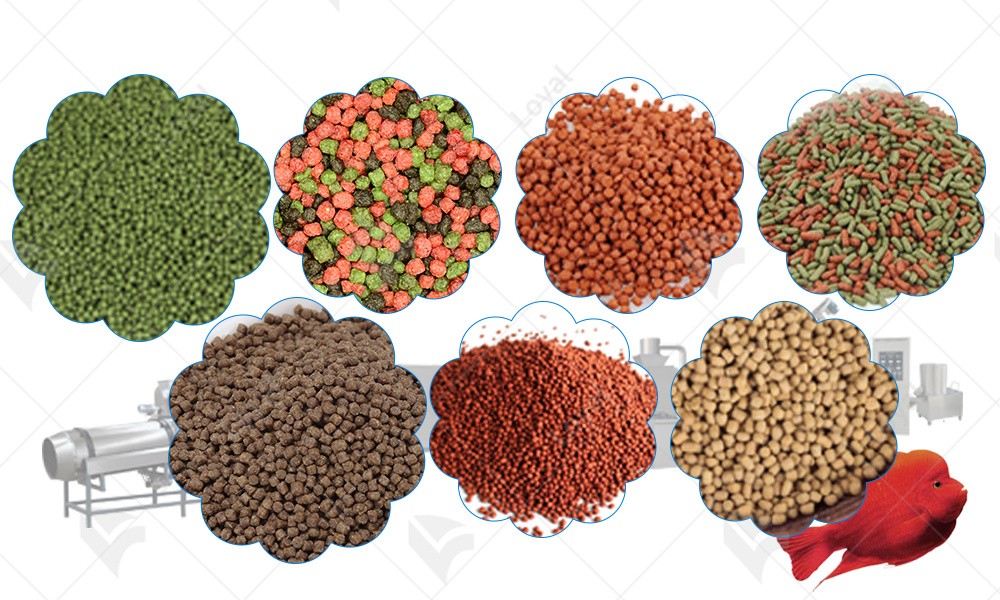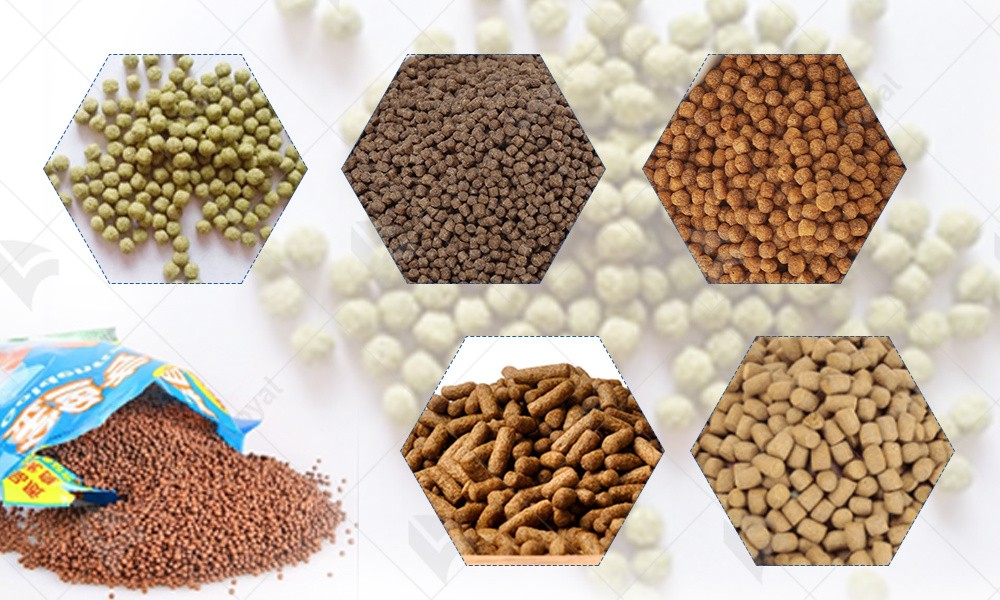
- Shandong Loyal Industrial Co.,Ltd.
- Macaroni Production Machine Instant Noodle Machine Biscuit Making Machine
Home> Company News> How To Choose The Best Fish Feed Machine: 2024 Buyer’s Guide

How To Choose The Best Fish Feed Machine: 2024 Buyer’s Guide
2024-10-25 10:11:21Brief Overview of the Aquaculture Industry and its Growth
The aquaculture industry, also known as aquafarming, has witnessed significant growth in recent years, becoming an essential component of global food production. This industry involves the farming of aquatic organisms such as fish, mollusks, crustaceans, and aquatic plants in controlled environments, either in freshwater or saltwater.
The rapid expansion of the aquaculture sector is driven by several factors, including population growth, increasing demand for protein-rich foods, and the need for sustainable food production methods. As the global population continues to rise, the demand for seafood has also surged, making aquaculture a crucial player in meeting this demand. According to the Food and Agriculture Organization (FAO) of the United Nations, aquaculture is now the fastest-growing food production sector, contributing to over 50% of the world's total fish supply.
Fish feed machines have played a pivotal role in this growth by providing efficient and precise feeding solutions for aquatic animals. These machines have evolved over time, incorporating advanced technologies to meet the changing needs of the aquaculture industry. By improving feed conversion rates and reducing waste, fish feed machines have significantly enhanced the productivity and sustainability of aquaculture operations.
As we delve deeper into this article, we will explore the evolution, types, and features of modern fish feed machines, as well as the latest innovations in this technology. We will also discuss how these innovations are enhancing aquaculture efficiency, contributing to the growth and success of this vital food production sector.

Evolution of Fish Feed Machines
The evolution of fish feed machines has been a remarkable journey, reflecting the continuous innovation and adaptability of the aquaculture industry. Early fish feed machines were relatively simple devices, designed primarily to distribute feed evenly across aquaculture ponds or tanks.
Over time, these machines have undergone significant improvements, incorporating more sophisticated technologies and features. One of the earliest advancements was the introduction of automated feeding systems, which allowed for more precise control over feeding schedules and quantities. This was a significant step forward, as it reduced the labor intensity of feeding operations and improved feed conversion rates.
As technology progressed, fish feed machines began to incorporate sensors and monitoring systems, enabling aquaculture professionals to track feed consumption, water quality, and other critical parameters in real-time. This data-driven approach allowed for more informed decision-making and further optimized feeding practices.
In recent years, the integration of artificial intelligence (AI) and the Internet of Things (IoT) has revolutionized fish feed machine technology. These advanced systems can now predict feeding requirements based on historical data, environmental conditions, and the growth stages of aquatic animals. They can also automatically adjust feeding schedules and quantities to maximize feed conversion efficiency and minimize waste.
The evolution of fish feed machines is a testament to the industry's commitment to innovation and sustainability. As these machines continue to evolve, they will play an increasingly important role in enhancing aquaculture efficiency and meeting the growing demand for seafood.

Types and Features of Modern Fish Feed Machines
Modern fish feed machines come in a variety of types and sizes, each designed to meet the specific needs of different aquaculture operations. Some of the most common types of fish feed machines include:
Automated Feeding Systems: These systems are designed to distribute feed automatically, based on pre-programmed schedules and quantities. They can be either mechanical or electronic, and they often incorporate sensors to monitor feed consumption and adjust feeding rates accordingly. Automated feeding systems help reduce labor costs and improve feed conversion efficiency.
Drum Feeders: Drum feeders are manual devices that use a rotating drum to distribute feed evenly across a pond or tank. They are typically used in smaller-scale aquaculture operations and are known for their simplicity and durability.
Pneumatic Feeders: Pneumatic feeders use compressed air to propel feed particles through a pipe network, delivering them directly to the feeding zones of aquatic animals. These systems are highly efficient and can be customized to fit the specific layout and needs of an aquaculture facility.
Smart Feeders: Smart feeders are the latest advancement in fish feed machine technology. They incorporate AI and IoT technologies to monitor environmental conditions, predict feeding requirements, and adjust feeding schedules in real-time. Smart feeders can significantly improve feed conversion rates, reduce waste, and optimize the overall productivity of aquaculture operations.
Regardless of their type, modern fish feed machines share several common features that enhance their effectiveness and efficiency. These features include:
Precision Feeding: Modern fish feed machines can deliver feed with high precision, ensuring that aquatic animals receive the optimal amount of nutrition they need to grow and thrive.
Durability and Reliability: These machines are built to withstand the harsh conditions of aquaculture operations, ensuring consistent performance and long-term reliability.
Ease of Use: Many modern fish feed machines are designed with user-friendly interfaces and controls, making them easy to operate and maintain.
Scalability: These machines can be scaled to fit the needs of different-sized aquaculture operations, from small-scale farms to large-scale commercial facilities.
By incorporating these features, modern fish feed machines are helping to drive innovation and efficiency in the aquaculture industry.

Benefits of Using Modern Fish Feed Machines in Aquaculture
The use of modern fish feed machines in aquaculture offers numerous benefits, ranging from improved feed conversion efficiency to enhanced productivity and sustainability. Here are some of the key advantages of using these advanced machines:
Improved Feed Conversion Efficiency: Modern fish feed machines are designed to deliver feed with high precision, ensuring that aquatic animals receive the optimal amount of nutrition they need to grow and thrive. This leads to improved feed conversion rates, as less feed is wasted and more energy is directed towards growth.
Optimized Feeding Schedules: By incorporating sensors and monitoring systems, modern fish feed machines can automatically adjust feeding schedules based on environmental conditions and the growth stages of aquatic animals. This ensures that feed is delivered when it is most needed, maximizing growth rates and minimizing stress on the animals.
Labor Savings: Automated feeding systems can significantly reduce the labor intensity of aquaculture operations. By eliminating the need for manual feeding, these systems allow aquaculture professionals to focus on other critical tasks, such as monitoring water quality and managing disease prevention measures.
Data-Driven Decision Making: Modern fish feed machines often incorporate IoT technologies that enable real-time monitoring and data collection. This allows aquaculture professionals to track feed consumption, water quality, and other critical parameters, enabling more informed decision-making and further optimization of feeding practices.
Enhanced Sustainability: By reducing feed waste and improving feed conversion efficiency, modern fish feed machines contribute to more sustainable aquaculture practices. This helps to minimize the environmental impact of aquaculture operations and supports the industry's efforts to meet growing demand for seafood in a responsible and sustainable way.
Increased Productivity: The use of modern fish feed machines can lead to increased productivity in aquaculture operations. By optimizing feeding practices and reducing stress on aquatic animals, these machines help to support faster growth rates and healthier populations, ultimately resulting in higher yields and greater profitability.
In summary, the benefits of using modern fish feed machines in aquaculture are numerous and significant. By improving feed conversion efficiency, optimizing feeding schedules, reducing labor costs, enabling data-driven decision-making, enhancing sustainability, and increasing productivity, these advanced machines are helping to drive innovation and efficiency in the aquaculture industry.

Additional Benefits of Using Modern Fish Feed Machines in Aquaculture
In addition to the previously mentioned benefits, modern fish feed machines offer several other advantages that can further enhance the efficiency and sustainability of aquaculture operations. Here are some additional benefits:
Customizable Feed Formulations: Modern fish feed machines allow for the customization of feed formulations to meet the specific nutritional needs of different aquatic species and growth stages. This ensures that animals receive the precise nutrients they require for optimal growth and health, reducing the risk of nutrient deficiencies or excesses.
Improved Feed Quality: Advanced manufacturing processes used in modern fish feed machines help to produce feed with a consistent particle size and shape, which can improve its digestibility and absorption by aquatic animals. This leads to better nutrient utilization and overall health, contributing to higher productivity and reduced mortality rates.
Disease Prevention: Proper nutrition is crucial for maintaining the health and well-being of aquatic animals. Modern fish feed machines can help to prevent diseases by delivering feed that is fortified with essential vitamins, minerals, and antioxidants. These nutrients support the immune system and help animals to better resist infections and other health issues.
Cost Savings: While the initial investment in modern fish feed machines may be higher, the long-term cost savings can be significant. By reducing feed waste, optimizing feeding schedules, and improving feed conversion efficiency, these machines can help to lower feed costs and increase overall profitability.
Regulatory Compliance: As the aquaculture industry faces increasing scrutiny and regulation, modern fish feed machines can help to ensure compliance with relevant standards and regulations. By providing accurate and traceable records of feeding practices, these machines can support efforts to ensure the safety and quality of aquatic products.
In conclusion, modern fish feed machines offer a wide range of benefits that can enhance the efficiency, sustainability, and profitability of aquaculture operations. By improving feed quality, customizing feed formulations, preventing diseases, saving costs, and ensuring regulatory compliance, these advanced machines are playing a critical role in driving innovation and progress in the aquaculture industry.
Reference
The following are five authoritative foreign literature websites in the field of Industrial food machinery:
1. Food Engineering Magazine
Website: https://www.foodengineeringmag.com/
2.Food Processing Magazine
Website: https://www.foodprocessing.com/
3.Journal of Food Engineering
Website:https://www.journals.elsevier.com/journal-of-food-engineering
4. Food Manufacturing Magazine
Website:https://www.foodmanufacturing.com/
5. International Journal of Food Science & Technology
Website:https://onlinelibrary.wiley.com/
 Commercial Japanese Panko Bread Crumb Grinder Machine
Commercial Japanese Panko Bread Crumb Grinder Machine Japanese Bread Crumbs Processing Line
Japanese Bread Crumbs Processing Line Automatic Cookies Making Machines
Automatic Cookies Making Machines Fully Automatic Biscuit Making Machines
Fully Automatic Biscuit Making Machines